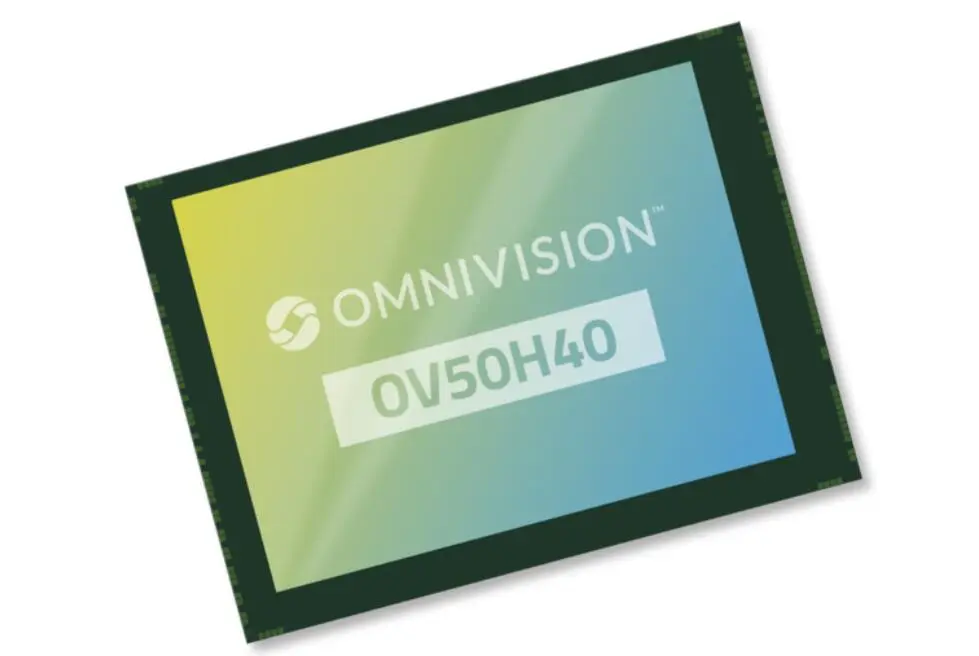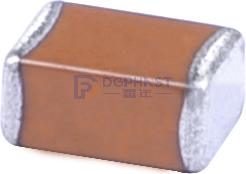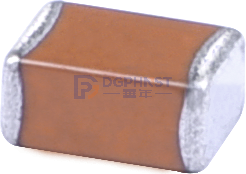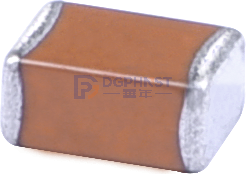On July 11th, good news came from the smartphone industry. The intelligent AI function is expected to boost demand for iPhones, and Apple plans to increase new iPhone shipments by 10% in 2024. It is expected that the shipment of iPhone 16 will reach 90 million units in the second half of this year.
The Apple iPhone 16 Pro model is expected to be equipped with an upgraded main lens and a new sensor that can improve low light performance. This new type of image sensor (CIS) will have a completely new and complex process. Previously, Apple only ordered the required CIS from Sony. Due to Apple's addition of new technology and concerns about the shortage of CIS, Samsung may be included in the scope of CIS procurement. Outside of Apple, we see an increasing number of domestically produced high-end image sensors on flagship smartphones from Huawei, Honor, and Xiaomi this year.
Since the advent of smartphones, the technological evolution of CMOS image sensors has been on the fast lane. This article explains the market and technological trends of image sensors for 5G smartphones in recent times.
50 million pixels become standard for high-end smartphone CIS! The market size is expected to exceed 21.4 billion this year
As is well known, image sensors are important photosensitive components. CIS, due to its small size and low cost, has a higher market share than CCD (photosensitive coupling component) and is widely used in various fields such as mobile phones, automobiles, safety control, and healthcare. It is also the most valuable key component of lens modules.
The latest analysis report from TechInsights points out that the smartphone image sensor market has rebounded, with revenue growth exceeding 10% in the fourth quarter of 2023. The market adjustment has driven a decrease in inventory, coupled with an increase in seasonal orders for high-end smartphones, which has boosted market revenue for this quarter. Sony Semiconductor Solutions has reached a historic high in revenue for smartphone image sensing, ranking first, closely followed by Samsung and Huawei Technologies.
According to data from Qunzhi Consulting, the market size of smartphone image sensors will slightly increase in 2023, with a global CIS market size of approximately $19 billion, a year-on-year growth of 2%. With the improvement of CIS technology and the continuous emergence of various application scenarios, the demand for high-performance CIS continues to grow. Qunzhi Consulting predicts that the global CIS market size is expected to reach 21.4 billion US dollars by 2024, with a compound annual growth rate of over 13%.
According to research by Yole Group, the average number of cameras installed on a single smartphone is also increasing year by year, expected to rise from 3.9 in 2022 to 4.6 in 2028. The increase in the number of smartphone cameras directly drives the demand for CMOS image sensors in the market, injecting strong development momentum into the mobile CIS market.
In the field of mobile CIS, there are three major trends: 1. There is a trend for 50MP products to gradually replace 64MP, with a demand growth of 57.8% by 2025. On high-end smartphones, a 50 megapixel image sensor has become standard; 2. Domestic 50MP products have achieved success, accelerating the localization of high-end main camera CIS. 3. In recent years, with the fixed number of mobile phone cameras, sensor manufacturers have focused on higher speeds and dynamic ranges in order to meet the needs of smartphone manufacturers, in addition to pursuing high pixels.
Pursuing higher dynamic range! Sony IMX989 and IMX858 are compatible with new flagship products from domestic manufacturers
Jeffrey Mathews, Senior Analyst at Strategy Analytics, a subsidiary of TechInsights, said, "Smartphone manufacturers are committed to equipping their phones with high-performance cameras that provide excellent image quality, fast autofocus, and outstanding HDR capabilities. Today, the market's demand for 50 megapixel CIS products with large pixel sizes and larger optical formats is increasing day by day. Our research has found that by 2023, the shipment volume of smartphone CIS products with resolutions exceeding 50 megapixels is expected to exceed 800 million units
Sony has released the IMX989 image sensor, which is the first 1-inch large bottom image sensor. It has enough space to allow more light to enter, to capture incredible details and clear images. It also has a high dynamic range, which can achieve better low light performance and more accurate color reproduction.
After the marginal effects brought by high pixels became increasingly apparent, many CIS manufacturers have realized that higher dynamic range is a new trend, and its importance can even be compared to computational photography. There are many technical routes to achieve high dynamic range imaging, such as traditional multi image synthesis. Compared to synthesizing multiple images, DCG, a simultaneous reading technology, also provides a way to obtain HDR images.
The Sony IMX989 is a powerful and versatile image sensor that provides a range of advanced features for high-quality smartphone photos and cameras. It supports DCG mode, but it uses a 40nm process, which significantly increases power consumption when DCG is turned on. Another outstanding feature of IMX989 is its fast autofocus technology. It combines phase detection and contrast detection to achieve fast and accurate focusing. The IMX989 is also suitable for ultra-thin devices, with a micro form factor of 1/1.7 inch.
Some large technology companies such as Xiaomi, Vivo, and Sharp have already equipped their flagship products with this processor. The 1-inch sensor used on the Xiaomi 12S Ultra is the Sony IMX989 sensor, which has the ability to capture 12MP images. The LYT-900, which was first released by OPPO Find X7, is a product released by Sony after upgrading its technology and launching a 22nm version.
According to the latest news, the Xiaomi 15 Pro will be equipped with a periscope telephoto lens and a Sony IMX858 sensor. This sensor supports 5x optical zoom, allowing users to capture distant objects clearly. The lens aperture is f/2.5, which helps to capture more light and obtain brighter and clearer images even in low light conditions. The Sony IMX858 sensor has a size of 1/2.51 inch and a pixel count of 50 million pixels. The Sony IMX858 provides excellent night photography effects. It is the first sub camera sensor that supports ultra-low power multi camera collaboration, allowing the sensor to achieve multiple perspectives and color tone changes.
Mobile CIS domestic large bottom products have achieved a breakthrough! Haowei Technology and SITWEI's shipment of 50 million main camera sensors has surged
In January 2023, Huawei Technologies, a subsidiary of Weil Group, released for the first time a 1.2-micron pixel high-resolution image sensor OV50H for smartphone rear cameras. This high-resolution 50 megapixel image sensor adopts dual conversion gain (DCG) technology, 1.2-micron pixels, and 1/1.3-inch optical format, supporting multiple HDR modes and high frame rates, designed specifically for high-end smartphone rear cameras.

From the technical parameters exposed by Haowei Technology, this product has a CMOS photosensitive area of 1/1.28 inch, 50 million pixels, supports pixel four in one, H/V QPD focusing, and DCG HDR technologies. Four in one pixel merging can achieve 12.5 million pixel video and preview, with an equivalent sensitivity of 2.4 microns, and can achieve excellent low light performance; Supports frame rates up to 120 frames per second and has 4x low light sensitivity.
The product was sampled in April 2023, and in April of this year, the Huawei Pura70 series was launched. The Huawei OV50H also successfully replaced Sony's camera chip as the main camera sensor for the Pura 70 standard version, further enhancing the localization level of important components for Huawei smartphones. The Huawei P70 is equipped with a 50 megapixel main camera sensor, which has brought a demonstration effect to Weil Group's promotion of 50MP pixel CIS high-end positioning products in domestic brand smartphones this year. This product is used for the image sensor (CIS) installed in the rear main camera optical module of flagship smartphones of the year, gradually replacing the previous Sony and Samsung models in the same category.
It is reported that in the field of 50MP mobile CIS chips, Weir has laid out five products including OV50A, OV50D, and OV50E, successfully positioning domestic mobile phones and gradually gaining market share in flagship domestic terminal models such as Huawei, Xiaomi, and Honor. These products are applied in the wide and ultra wide rear cameras of these high-end flagship phones.
In the field of in car image sensors, Howay's OX08D10 has introduced its latest TheiaCel technology, combining DCG and LOFIC solutions. OX08D10 adopts a LOFIC architecture with a single photodiode, combined with a larger capacitor to capture the charge overflowing from the photodiode, achieving a larger full well capacity. That's why TheiaCEL can achieve a dynamic range of up to 140dB by adding two short exposures beyond DCG.
According to the recently released performance forecast for the first half of 2024 by Weil Group, it is expected to achieve a net profit attributable to the parent company of RMB 1.308 billion to RMB 1.408 billion in the first half of the year, an increase of 754.11% to 819.42% year-on-year. The company stated that with the introduction of products in the high-end smartphone market and the continuous penetration of autonomous driving applications in the automotive market, the company's revenue has achieved significant growth.
In January 2024, SITWEI launched its first 1/1.28-inch product SS580XS with a 50M specification. This sensor is designed specifically for the main camera of high-end smartphones and introduces multiple innovative technologies, including SITWEI's new generation pixel technology SFC Pixel-2, PixGain HDR, and AllPix ADAF. These technologies enable the SC580XS to achieve low noise, full pixel focusing, and ultra-low power consumption while maintaining high dynamic range. SC580XS is manufactured based on the 22nm HKMG process, therefore it has excellent low-power performance. Compared with similar products, its shooting power consumption has been reduced by 34% and 56% in different focusing modes, respectively.
Recently, SITWEI released its latest semi annual performance forecast for 2024, expecting to achieve revenue of 2.4 billion to 2.5 billion yuan in the first half of 2024. Among them, the shipment volume of high-end 50 million pixel products applied to flagship mobile phone main cameras, wide-angle and telephoto lenses has increased significantly, driving significant revenue growth in the smartphone field.
From the recent releases of new products by manufacturers such as Sony, Haworth, and STMicroelectronics, image sensors with over 100 million pixels are no longer a must-have. On the contrary, CIS with high dynamic range technologies such as DCG can better meet the needs of OEMs.
Summary:
In 2024, the demand for smartphone terminals is showing a recovery trend, boosting the demand for mobile CIS. The latest report from IDC shows that global smartphone shipments in the second quarter of 2024 increased by 6.5% year-on-year, reaching 285.4 million units. The mid to low end models benefit from the acceleration of localization of 50MP products, as well as the upgrading of functions such as ultra wide angle and telephoto in mid to high end models, further expanding the demand for CIS in the smartphone market.
Sony and Samsung have continuously expanded their market share through the launch of new products, while Chinese manufacturers Huawei and SITTV have achieved breakthroughs in 50 million pixel main camera image sensors. We believe that the cost-effectiveness of domestically produced 50 million pixel sensors will also drive the recovery of the smartphone market. We will wait and see what new breakthroughs will be achieved in the future image sensor technology under the pressure of mobile terminal demand.






